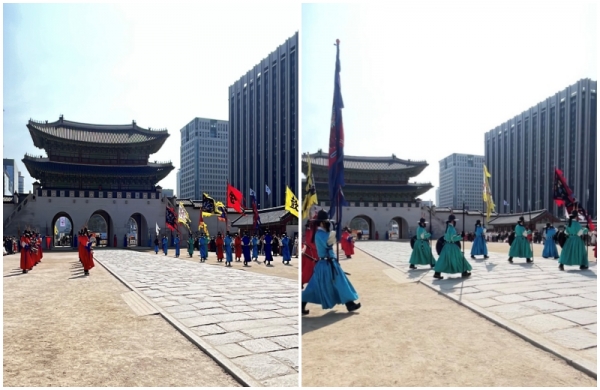By Honorary Reporters Lhakpa Dolma Lama from Nepal
Photos = Lhakpa Dolma Lama
The ceremony reenacts the custom of the royal court during the Joseon Dynasty to ensure the security of the king and his court. At Gwanghwamun Gate, the main entrance to the palace, visitors can see the event twice a day at 10 a.m. and 2 p.m. except Tuesdays, when Gyeongbokgung is closed.

I visited Gyeongbokgung Palace on March 6 right before the second ceremony of the day was about to start. As I approached Gwanghwamun Gate, I saw crowds of people, many of them dressed in Hanbok (traditional clothing), around the gate, eagerly waiting for the ceremony to begin. I could feel the excitement and anticipation in the air.
The clock struck 2 p.m. and the ceremony began with a traditional music band playing instruments like drums, taepyeongso (double-reed oboe) and jing (gong), followed by the palace guards marching toward the gate in their colorful uniforms.

The guards carried traditional weapons and moved in precise formations. As they reached the gate, they performed intricate movements and rituals and did an exchange of symbolic keys between the commanders of the incoming and outgoing guards. This ceremony reflects the values of respect, honor and duty and shows the guards' high level of discipline and training.
Seeing a ceremony that has been performed with a long history was both beautiful and captivating and felt like going back in time.

In addition, the palace's royal court is rich in architecture dating back to the Joseon era spread across a huge area. It has many grand buildings, gardens and museums that are great for walks and taking beautiful pictures. Visitors here often wear Hanbok as admission is free for those wearing the traditional costumes.


